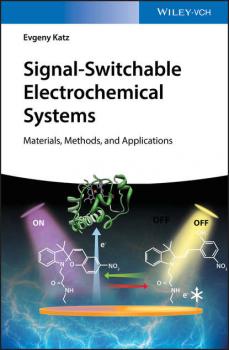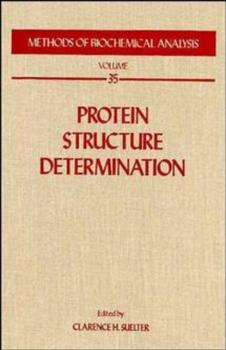Прочая образовательная литература
Различные книги в жанре Прочая образовательная литератураSignal-Switchable Electrochemical Systems
A guide to the biological control over electronic systems that lead the way to wearable electronics and improved drug delivery In recent years, this area of electrochemical systems has developed rapidly and achieved significant progress. Signal-Switchable Electrochemical Systems offers an overview to the wide-variety of switchable electrochemical systems and modified electrodes. The author—a noted researcher and expert on the topic—summarizes research efforts of many groups in a range of universities and countries. The book explores various types of external signals that are able to modify electrode interfaces, for example electrical potential, magnetic field, light, as well as chemical and biochemical inputs. Multifunctional properties of the modified interfaces allow their responses to complex combinations of external signals. These are integrated with unconventional biomolecular computing systems logically processing multiple biochemical signals. This approach allows the biological control over electronic systems. The text explores the applications in different areas, including unconventional computing, biofuel cells and signal-triggered molecular release in electrochemical systems. This important guide: Provides an overview to the biological control over electronic systems and examines the key applications in biomedicine, electrochemical energy conversion and signal-processing Offers an important text written by a highly cited researcher and pioneer in the field Contains a summary of research efforts of an international panel of scholars representing various universities and countries Presents a groundbreaking book that provides an introduction to this interdisciplinary field Written for scientists working with electrochemical systems and applications with signal-responsive materials, Signal-Switchable Electrochemical Systems presents an overview of the multidisciplinary field of adaptable signal-controlled electrochemical systems and processes and highlights their key aspects and future perspectives.
Nanobiotechnology II
This second volume on a burgeoning field retains the proven concept of the spectacularly successful first one, extending and supplementing it. Individual sections are each dedicated to nanoparticles, nanostructures and patterns, nanodevices and machines, and nanoanalytics. Essential reading for an entire generation of scientists, this authoritative survey defines one of the most important new scientific fields to have emerged for many decades.
The Aptamer Handbook
In The Aptamer Handbook, leading scientists from academia as well as biotech and pharma companies introduce the revolutionary concept of designing RNA and DNA oligonucleotides with novel functions by in vitro selection. These functions comprise high affinity binding (aptamers), catalytic activity (ribozymes and deoxyribozymes) or combinations of binding and catalytic properties (aptazymes). Basic concepts and technologies describing in detail how these functional oligonucleotides can be identified are presented. Numerous examples demonstrate the versatility of in vitro selected oligonucleotides. Special emphasis has been put on a section that shows the broad applicability of aptamers, e. g. in target validation, for analytics, or as new therapeutics. This first overview in the field is of prime interest for a broad audience of scientists both in academia and in industry who wish to expand their knowledge on the potential of new oligonucleotide functions and their applications.
Recent Advances in Trace Elements
Comprehensive and multidisciplinary presentation of the current trends in trace elements for human, animals, plants, and the environment This reference provides the latest research into the presence, characterization, and applications of trace elements and their role in humans, animals, and plants as well as their use in developing novel, functional feeds, foods, and fertilizers. It takes an interdisciplinary approach to the subject, describing the biological and industrial applications of trace elements. It covers various topics, such as the occurrence, role, and monitoring of trace elements and their characterization, as well as applications from the preliminary research to laboratory trials. Recent Advances in Trace Elements focuses on the introduction and prospects of trace elements; tackles environmental aspects such as sources of emission, methods of monitoring, and treatment/remediation processes; goes over the biological role of trace elements in plants, animals, and human organisms; and discusses the relevance of biomedical applications and commercialization. A compendium of recent knowledge in interdisciplinary trace element research Uniquely covers production and characterization of trace elements, as well as the industrial and biomedical aspects of their use Paves the way for the development of innovative products in diverse fields, including pharmaceuticals, food, environment, and materials science Edited by well-known experts in the field of trace elements with contributions from international specialists from a wide range of areas Unique in presenting comprehensive and multidisciplinary information of the key aspects of trace elements research in a digestible form, this book is essential reading for the novice and expert in the fields of environmental science, analytical chemistry, biochemistry, materials science, pharmaceutical science, nutraceutical, and pharmaceutical sciences. It is also valuable for companies that implement new products incorporating trace elements to the market.
Computational Methods for Protein Folding
Since the first attempts to model proteins on a computer began almost thirty years ago, our understanding of protein structure and dynamics has dramatically increased. Spectroscopic measurement techniques continue to improve in resolution and sensitivity, allowing a wealth of information to be obtained with regard to the kinetics of protein folding and unfolding, and complementing the detailed structural picture of the folded state. Concurrently, algorithms, software, and computational hardware have progressed to the point where both structural and kinetic problems may be studied with a fair degree of realism. Despite these advances, many major challenges remain in understanding protein folding at both the conceptual and practical levels. Computational Methods for Protein Folding seeks to illuminate recent advances in computational modeling of protein folding in a way that will be useful to physicists, chemists, and chemical physicists. Covering a broad spectrum of computational methods and practices culled from a variety of research fields, the editors present a full range of models that, together, provide a thorough and current description of all aspects of protein folding. A valuable resource for both students and professionals in the field, the book will be of value both as a cutting-edge overview of existing information and as a catalyst for inspiring new studies. Computational Methods for Protein Folding is the 120th volume in the acclaimed series Advances in Chemical Physics, a compilation of scholarly works dedicated to the dissemination of contemporary advances in chemical physics, edited by Nobel Prize-winner Ilya Prigogine.
Protein Structure Determination
Presents methods for determining the secondary and tertiary structure of proteins. The issues covered here involve theoretical/empirical approaches for predicting protein structure; a review using protein ligand interactions to study surface properties of proteins; use of fluorescence techniques to study structure and dynamics of proteins; and limited proteolysis with monoclonal antibodies to understand how specific structural features confer biological function.
The hERG Cardiac Potassium Channel
This book draws together contributions from basic, pharmaceutical and clinical sciences aimed at a better understanding of the structure and function of hERG and the molecular basis for compound binding. It features regulatory authority perspectives on preferred preclinical test systems and includes topics on hERG channel gating, regulation of functional expression, pharmacological properties of hERG/IKr channels, drug-induced long QT syndrome and preclinical evaluation and regulatory recommendations for assessing QT prolongation risks. Better understanding of the role of the hERG channel in drug-induced cardiac arrhythmias should ultimately lead to the development of important, new and safer medicines.
Laboratory Astrochemistry
Written by leading scientists in the field and intended for a broader readership, this is an ideal starting point for an overview of current research and developments. As such, the book covers a broad spectrum of laboratory astrophysics and chemistry, describing recent advances in experiments, as well as theoretical work, including fundamental physics and modeling chemical networks. For researchers as well as students and newcomers to the field.
Hybriden
Kreuzungen zwischen verschiedenen Arten gibt es nicht nur im Tierreich (wie Maultier, Maulesel), sondern auch in hohem Ma?e bei den Holzgewachsen. Lange wurden die Hybriden aus den gangigen Geholzfuhrern ausgeklammert, obwohl sie so essentiell fur die Forstwirtschaft und den Gartenbau sind. Auf diesem Gebiet ist dieses Buch das einzige Werk, das die Erkennungsmerkmale aller 130 Hybridenarten sowie ihrer Eltern tabellarisch auflistet und vergleichend gegenuber stellt. Daher ist eine exakte Bestimmung, auch mit Hilfe des ausfuhrlichen Bildmaterials, garantiert. Jede Hybride wird in ihrer botanischen und forstwirtschaftlichen Bedeutung in einem begleitenden Text beschrieben. Tabellen mit charakteristischen Merkmalen erganzen die durchgehend farbigen Fotos von Blattern und Fruchten. Seinen aktuellen Bezug erhalt dieses Ubersichts- und Bestimmungsbuch durch seine einzigartige Auflistung und Darstellung aller Hybriden und ihrer Eltern. Es schlie?t eine wichtige Lucke in der gartenbaulichen und forstlichen Literatur, so dass es nicht nur die Bestimmung, sondern auch fur die Auswahl und Nutzung der Hybriden fur Aufgaben in der Land- und Forstwirtschaft zu Rate gezogen werden kann. Unverzichtbar fur jeden Botaniker, Forstwissenschaftler, Pflanzenzuchter und Studenten der Forstwissenschaft.
Biocatalysis
The whole range of biocatalysis, from a firm grounding in theoretical concepts to in-depth coverage of practical applications and future perspectives. The book not only covers reactions, products and processes with and from biological catalysts, but also the process of designing and improving such biocatalysts. One unique feature is that the fields of chemistry, biology and bioengineering receive equal attention, thus addressing practitioners and students from all three areas.









